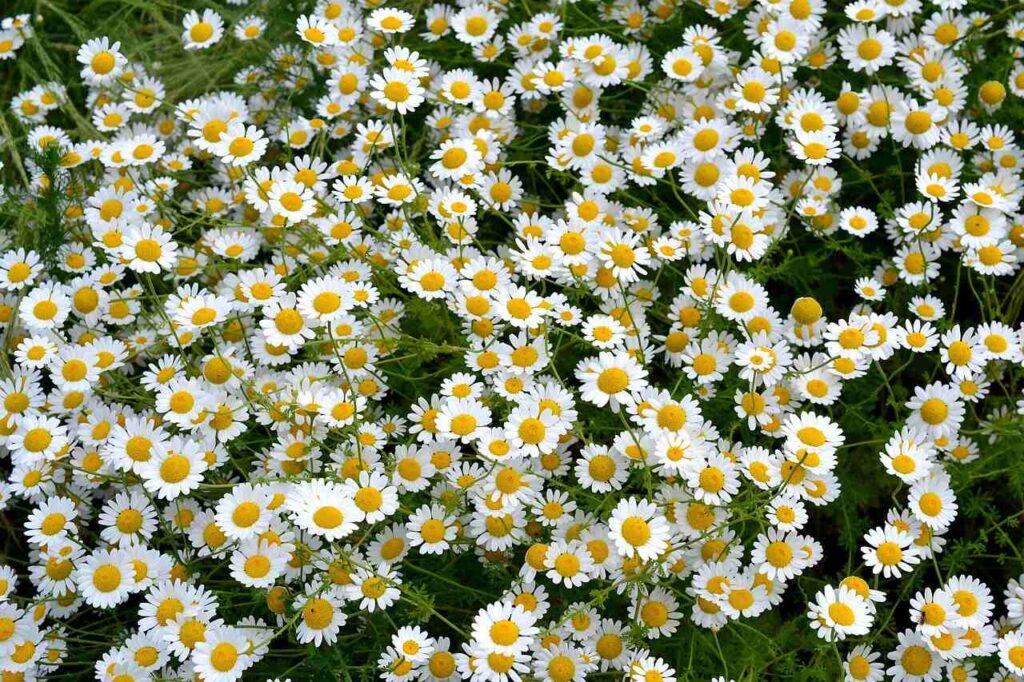# White Flower Weeds in Lawn: Identification and Removal
White flower weeds in your lawn can be a real nuisance. They spoil the look of your green grass. They also compete for nutrients, water, and sunlight. This can weaken your lawn. But don’t worry. With some knowledge and effort, you can manage these pesky weeds.
What Are White Flower Weeds?
White flower weeds are unwanted plants with white blossoms. They grow in lawns and gardens. These weeds spread quickly. They can be hard to control once established.
Common Types of White Flower Weeds
Here are some common types of white flower weeds you might find in your lawn:
1. White Clover (Trifolium repens)
White clover is a low-growing plant. It has three-part leaves and small white flowers. This weed thrives in poor soil. It can fix nitrogen from the air, improving soil fertility.
2. Chickweed (Stellaria media)
Chickweed is a winter annual. It has small, star-shaped white flowers. This weed prefers cool, moist conditions. It can form dense mats, crowding out grass.
3. Wild Carrot (Daucus carota)
Wild carrot, also known as Queen Anne’s Lace, is a biennial. It has feathery leaves and a cluster of tiny white flowers. This weed can grow tall, up to 4 feet. It has a deep taproot, making it hard to remove.
4. Mouse-ear Chickweed (Cerastium fontanum)
Mouse-ear chickweed is a perennial. It has fuzzy leaves and small white flowers. This weed spreads by seed and creeping stems. It prefers cool, moist conditions.
5. Bindweed (Convolvulus arvensis)
Bindweed is a perennial vine. It has arrow-shaped leaves and trumpet-like white flowers. This weed can strangle other plants. It has deep roots, making it hard to control.
Why Do These Weeds Grow?
Weeds grow because conditions are right for them. Here are some reasons why white flower weeds might be in your lawn:
1. **Poor Soil Health**: Weeds thrive in poor soil. If your soil lacks nutrients, weeds will move in.
2. **Compacted Soil**: Weeds can grow in compacted soil. Grass struggles in such soil, giving weeds an advantage.
3. **Overwatering**: Too much water can create ideal conditions for weeds like chickweed.
4. **Underwatering**: Not enough water can stress your grass, making it easier for weeds to take over.
5. **Thin Grass**: Weeds can easily invade if your grass is thin or weak.
How to Identify White Flower Weeds
Identification is the first step to control. Here’s how to identify common white flower weeds:
– **White Clover**: Look for three-part leaves and small white flowers.
– **Chickweed**: Small, star-shaped flowers and a low, spreading growth habit.
– **Wild Carrot**: Feathery leaves and a tall stem with a cluster of tiny white flowers.
– **Mouse-ear Chickweed**: Fuzzy leaves and small white flowers, forming dense mats.
– **Bindweed**: Vining habit with arrow-shaped leaves and white trumpet-like flowers.
How to Control White Flower Weeds
Controlling white flower weeds requires a mix of strategies. Here’s how to do it:
### 1. **Manual Removal**
Pulling weeds by hand is effective for small areas. Make sure to remove the entire root to prevent regrowth. Use a weeding tool for deep-rooted weeds like wild carrot.
### 2. **Mowing**
Regular mowing can help control weeds. Set your mower to the correct height for your grass type. Avoid cutting too short, which can stress the grass.
### 3. **Herbicides**
Herbicides can be effective for large infestations. Choose a selective herbicide that targets broadleaf weeds. Apply according to the label instructions. Be careful not to harm your grass.
### 4. **Improve Soil Health**
Healthy soil supports healthy grass. Test your soil to identify any deficiencies. Add compost or fertilizer as needed. Aerate compacted soil to improve drainage and root growth.
### 5. **Proper Watering**
Water your lawn deeply but infrequently. This encourages deep root growth. Avoid overwatering, which can promote weed growth.
### 6. **Overseeding**
Overseeding can help thicken your lawn. This makes it harder for weeds to invade. Choose a grass seed that matches your existing grass type.
## Prevention Tips
Preventing weeds is easier than controlling them. Here are some tips to keep white flower weeds out of your lawn:
– **Maintain Healthy Grass**: Healthy grass competes well with weeds.
– **Mulch**: Mulch garden beds to prevent weed seeds from germinating.
– **Clean Tools**: Clean your garden tools to avoid spreading weed seeds.
– **Monitor**: Regularly check your lawn for early signs of weed growth.
## Conclusion
White flower weeds can be a challenge, but with proper care and management, you can keep your lawn looking its best. Identify the weeds, understand why they’re growing, and use the right control methods. Regular maintenance and healthy lawn practices will go a long way in preventing these pesky invaders.
With patience and persistence, you can enjoy a beautiful, weed-free lawn.

